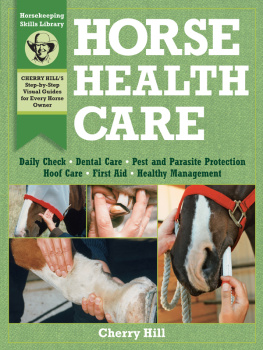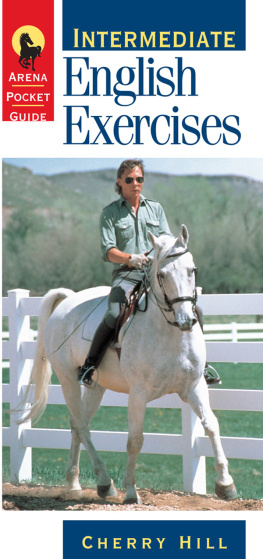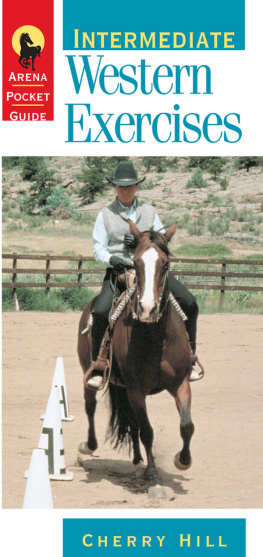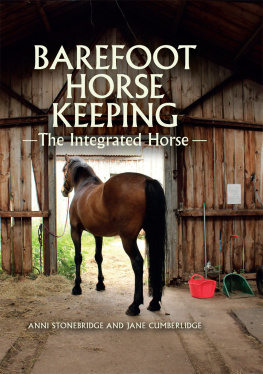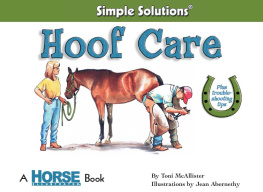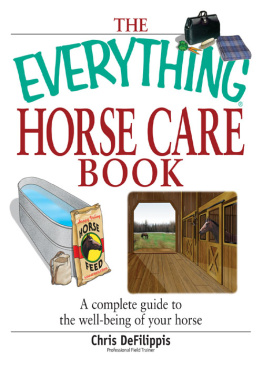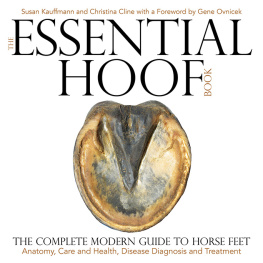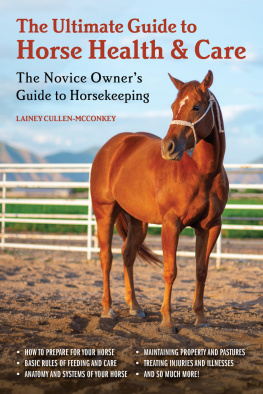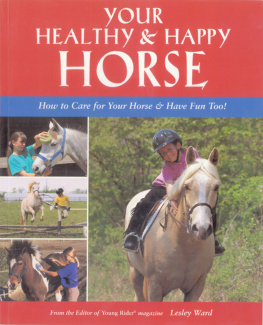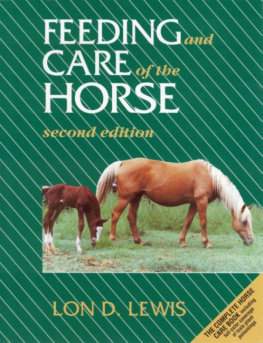HORSE HOOF CARE

RANDY DUNN
HORSE HOOF CARE
Cherry Hill and Richard Klimesh
Photography by Cherry Hill and Richard Klimesh Illustrations by Richard Klimesh

The mission of Storey Publishing is to serve our customers by publishing practical information that encourages personal independence in harmony with the environment.
Edited by Deborah Burns and Rebekah Boyd-Owens
Art direction and book design by Cynthia N. McFarland
Cover design by Joseph R. Williams
Text production by Jennifer Jepson Smith
Cover photography by Cherry Hill
Interior photography by Cherry Hill and Richard Klimesh
Illustrations by Richard Klimesh
Author photograph by Randy Dunn
Indexed by Susan Olason, Knowledge Maps & Indexes
2009 by Cherry Hill and Richard Klimesh
All rights reserved. No part of this book may be reproduced without written permission from the publisher, except by a reviewer who may quote brief passages or reproduce illustrations in a review with appropriate credits; nor may any part of this book be reproduced, stored in a retrieval system, or transmitted in any form or by any means electronic, mechanical, photocopying, recording, or other without written permission from the publisher.
The information in this book is true and complete to the best of our knowledge. All recommendations are made without guarantee on the part of the author or Storey Publishing. The author and publisher disclaim any liability in connection with the use of this information. For additional information, please contact Storey Publishing, 210 MASS MoCA Way, North Adams, MA 01247.
Storey books are available for special premium and promotional uses and for customized editions. For further information, please call 1-800-793-9396.
Printed in the United States by Versa Press
10 9 8 7 6 5 4 3 2 1
Library of Congress Cataloging-in-Publication Data
Hill, Cherry, 1947
Horse hoof care / Cherry Hill and Richard Klimesh.
p. cm.
Includes bibliographical references and index.
ISBN 978-1-60342-088-4 (pbk. : alk. paper)
1. HoofsCare and hygiene. 2. HorsesHealth.
I. Klimesh, Richard. II. Title.
SF907.H53 2009
636.1'0897585dc22
2008032435
CONTENTS
NOTES FROM THE AUTHORS
WHEN WE THINK OF A HORSE, we think of powerful muscles and athletic motion with mane and tail flowing. We picture a beautiful head and an expressive eye showing a generous, cooperative nature. We see behavior that demonstrates both curiosity and honesty. There is one trait we often take for granted, however: healthy, sound hooves. Without them, the noble horse is often transformed into an uncomfortable, tentative, grouchy, sullen, and tuned-out beast. No foot, no horse.
As a horse-show judge and riding instructor for many years, I have seen many fat and shiny overgroomed horses carrying thousands of dollars worth of tack and rider attire, dragging themselves around the ring with the most neglected hooves imaginable. Right there in the show arena or lesson ring, Ive seen too many hooves with extremely long toes and low heels, quarters that have overgrown the shoes, and cracks galore. Ive heard loose shoes rattling; seen mincing, wincing travel; and pulled many a lame horse out of a class, hoping the owner or rider would then take heed of the horses hoof-care needs.
Sadly, hoof care and horseshoeing are two topics that many horse owners seem to know very little about. Only when a horse develops a debilitating lameness do hooves suddenly become a topic of interest. Like many aspects of horse care, however, good management prevents many hoof problems; an ounce of prevention is truly worth a pound of cure.
Once you learn a few basic hoof-care skills and get in the habit of cleaning hooves, feeding for hoof quality, and scheduling regular farrier care, your horse will benefit greatly. And in the long run, it will save you time and money.
Your horse and I thank you for picking up this book. Youre obviously one of those horse owners who cares about your horses comfort and soundness or you wouldnt have read this far, so I applaud your dedication! I hope that the hoof-care information Richard and I share with you in this book will help you to help your horse be the best he can be healthy, sound, and full of life.

THIRTY YEARS AGO, when I was an eager farrier-science grad beginning my career, the choice of resources for farriers was limited, to say the least. Good-quality horseshoes were hard to find, and many farriers forged the shoes they used. Horseshoe nails were thick and tended to split the hoof. Hoof-repair materials consisted mainly of auto body filler and fiber-glass, which worked well on cars and boats but not very well on hooves. Hoof boots were a novelty then, and they were cumbersome to apply and difficult to keep on. Clinics and workshops were few and far between, and there were no online forums because, of course, there was no Internet.
Over the years, several varieties of well-designed keg shoes became available. Coupled with the slimmer nails that I had been hoping for, these improved shoes made my job more efficient and less damaging to hooves. Hoof sealers were developed that actually improved hoof quality, and new hoof-repair materials not only stuck to the hoof but also mimicked the characteristics of a hoof, which allowed a farrier to trim and nail into repaired areas as the hoof grew. Today, we have glue-on shoes that often stay affixed better than nailed shoes and that are especially helpful with very young or lame horses. A wide variety of modern high-quality hoof boots now enable many horses to be ridden in comfort yet be barefoot during their off time.
Ongoing research has disproved established beliefs about hoof care and has led to new, successful treatments for what were once thought to be commonly fatal hoof diseases, specifically laminitis and navicular syndrome. The World Wide Web increases farrier and horse-owner access to much of this research and lets them exchange opinions and advice.
What hasnt changed is the fact that a domestic horse still relies totally on his owner for all the things necessary for growing and maintaining strong healthy hooves. The key ingredients for great hooves are simple, and they begin with commitment and regular care. I hope this book will give you incentive to design an effective hoof-care plan that will enable you and your equine partner to enjoy many happy years together.


1
HOOF KNOWLEDGE
Why do some horses move boldly and confidently while others move meekly and cautiously? Why do some horses develop and maintain solid, healthy hooves while others hooves become small and contracted? What makes some hooves tough and durable and others brittle and pithy?
The quality and health of a hoof depend on genetics and environment. A horse inherits the potential for good or poor hooves from his parents. Environmental factors that influence hoof health include nutrition, sanitation, moisture, and exercise. As director of your horses hoof health management program, a good place to start is with a basic knowledge of how the foot works.
Next page

